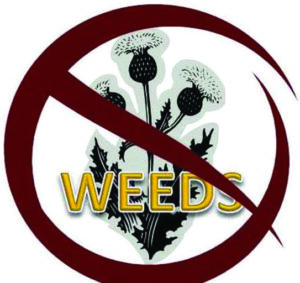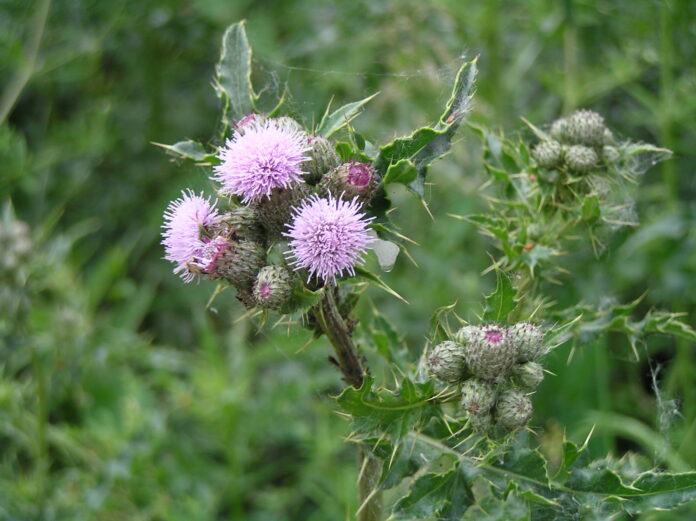Everyone’s Invasive Neighbor
By Blaine Bug Crew
 Some plants are so invasive they can be found on every property we visit. Every once in a while we will have a new crew member ask what Canada thistle looks like and promptly tell them to grab every weed in the transect, and when they scream out in pain, they have found the Canada thistle. Canada thistle is so resilient that people mow them every week, and they still come back.
Some plants are so invasive they can be found on every property we visit. Every once in a while we will have a new crew member ask what Canada thistle looks like and promptly tell them to grab every weed in the transect, and when they scream out in pain, they have found the Canada thistle. Canada thistle is so resilient that people mow them every week, and they still come back.
Canada thistle is an aggressive, colony-forming perennial weed that reproduces by seed and deep, extensive horizontal roots. Flowering occurs from June through August. The flowers are urn-shaped, purple (sometimes white), and male and female flowers occur on separate plants with heads ranging from 1/2 to 3/4-inch in diameter. Fruits are about 1/8 inch long and brownish with a tuft of hairs at the top. Stems are typically 1 to 4 feet tall with alternate, oblong, or lance-shaped leaves divided into spiny-tipped irregular lobes.
Canada thistle is a native of southeastern Eurasia and was introduced in gardens, flowerbeds, pastures, cultivated fields, rangelands, forests, riverbanks, ditches, and roadsides. Canada thistle can tolerate a wide range of environmental conditions but requires good light intensity for optimal growth. It is highly competitive with crops and, in heavy concentrations, effectively prevents grazing. Only two insects are approved for release—Urophora Cardui and Hydroplontus Litura.
Hydroplontus Litera is a biological control agent that attacks Canada thistle stems and rosettes. Adults feed on rosette leaf foliage in spring, and larvae consume tissues while mining within the shoots. At low densities, larval and adult feeding does not significantly impact the populations of Canada thistle directly.
Feeding does cause secondary damage, however, as pathogens and other organisms enter the stems of Canada thistle via holes made by exiting larvae. At high densities, feeding by Hydroplontus Litura will reduce the vigor of both rosettes and flowering stems to the point of deterioration.
Overwintering weevils emerge from soil litter and feed on leaf and stem tissue in early spring. Eggs are laid in spring within Canada thistle’s bolting shoots, with hatching larvae mining in the stems and root crowns of Canada thistle throughout spring and summer. Multiple larvae (up to 20) can be found in individual stems. Mature larvae tunnel out of the stems, drop to the soil surface, and pupate in the soil. Adults of the new generation emerge in August and overwinter in soil litter, and there is one generation per year. The weevil does best in open but moist areas with scattered Canada thistle plants.
We hope this article helps you to understand Canada thistle better… on how they are spread through fields and how hard they are to remove. If you are aware of a new outbreak of Canada thistle on public land, please call Kay Draper with the Blaine County Weed Department, (208) 727-7221. She can assess the situation to see if biological control is a viable option.

